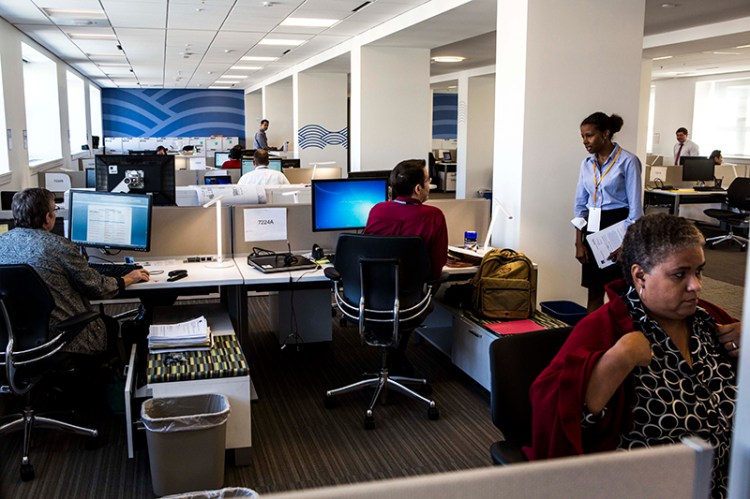A cubicle-free workplace without private offices is supposed to force employees to collaborate. To have them talk more face-to-face. To get them off instant messenger and spontaneously brainstroming about new ideas.
But a recent study by two researchers offers evidence to support what many people who work in open offices already know: It doesn’t really work that way. The noise causes people to put on headphones and tune out. The lack of privacy prompts others to work from home when they can. And the sense of being in a fishbowl means many choose email over a desk-side chat.
In an open office workplace, said study co-author and Harvard Business School professor Ethan Bernstein in a recent interview, “I walk into this space, and I see everyone wearing big headphones staring intently at a screen trying to look busy because everyone can see them.” The result can be that “instead of interrupting people, I’ll send an email.”
Bernstein studied two Fortune 500 companies that made the shift to an open office environment from one where workers had more privacy. Using “sociometric” electronic badges and microphones, as well as data on email and instant messenger use by employees, the researchers found in the first study that after the organization made the move to open-plan offices, workers spent 73 percent less time in face-to-face interactions. Meanwhile, email rose 67 percent and IM use went up 75 percent.
The participants wore the badges and microphones for several weeks before the office was redesigned and for several after, and the company gave the researchers access to their electronic communications. The results were startling. “We were surprised by the degree to which we found the effect we found,” Bernstein said.
The badges worn around participants’ necks included an infrared sensor, bluetooth sensor and an accelerometer that, combined with a microphone, could tell that two people had a face-to-face interaction, Bernstein said, without recording actual spoken words. The researchers were careful to make sure other variables weren’t in question – the business cycle was similar, for instance, and the group of employees were the same.
In a second study, the researchers looked at shifts in interactions in specific pairs of colleagues, finding a similar drop in face-to-face communication and a smaller but still significant increase in electronic correspondence (emailing each other between 22 and 50 percent more).
There’s a “natural human desire for privacy, and when we don’t have privacy, we find ways of achieving it,” Bernstein said. “What it was doing was creating not a more face-to-face environment, but a more digital envionroment. That’s ironic because that’s not what people intend to try to do when creating open office spaces.”
Another wrinkle in their research, Bernstein said, is that not only did workers shift the mode of communication they used, but they tended to interact with different groups of people online than they did in person. Moving from one kind of communication to another may not be all bad – “maybe email is just more efficient,” he said – but if managers want certain teams of people to be interacting, that may be lost more than they think. The shift in office space could “have profound effects on productivity and the quality of work.”
Bernstein hopes the research will offer empirical evidence that will help managers consider the possible trade-offs of moving to an open office plan. In seeking a lower cost per square foot, they buy into the idea that it will also lead to more collaboration, even if it’s not clear that’s true.
“I don’t blame the architects,” he said. “But I do think we spend more of our time thinking about how to design workspaces based on the observer’s perspective” – the manager – “rather than the observed.”
Send questions/comments to the editors.


